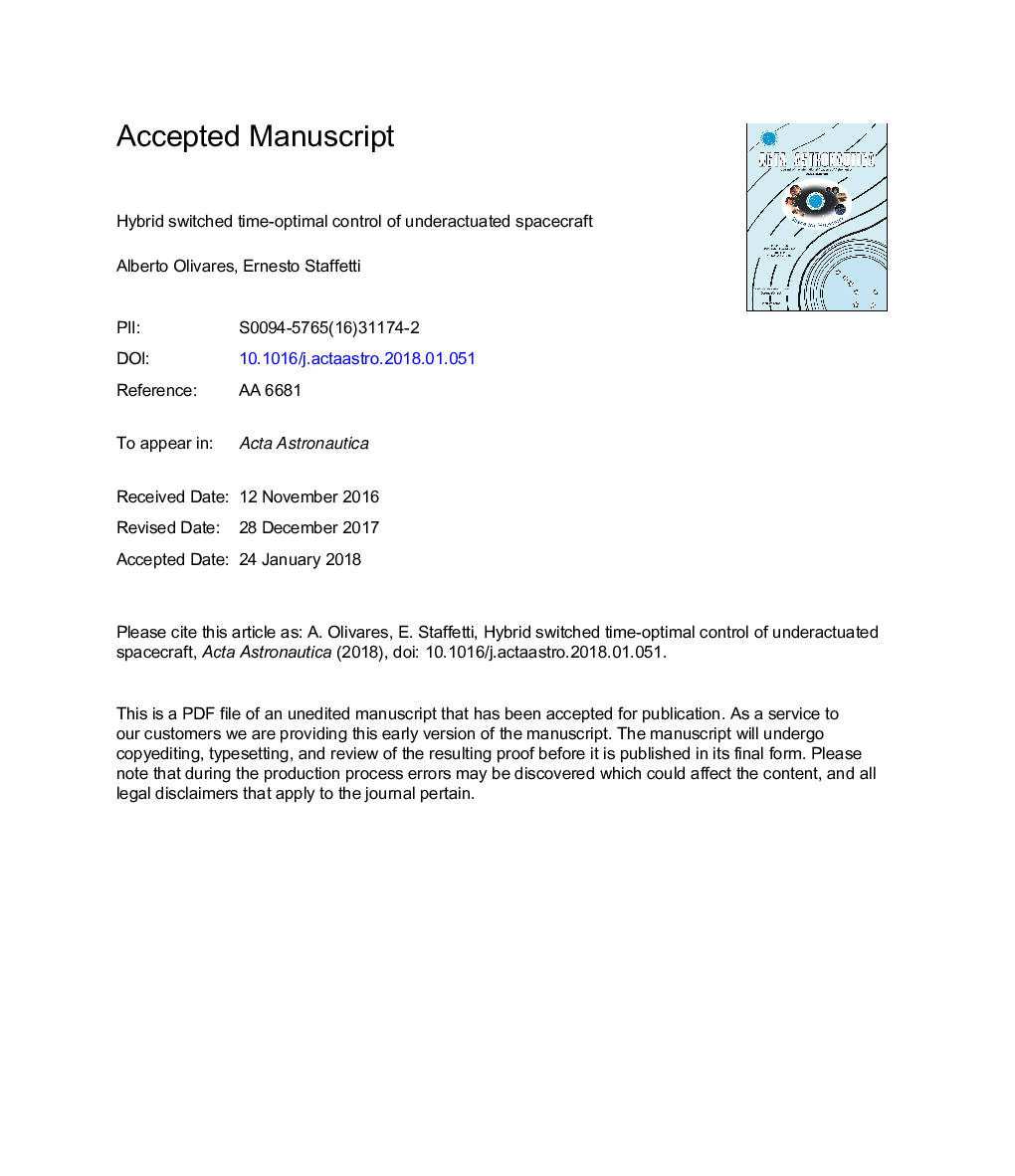| Article ID | Journal | Published Year | Pages | File Type |
|---|---|---|---|---|
| 8055671 | Acta Astronautica | 2018 | 41 Pages |
Abstract
This paper studies the time-optimal control problem for an underactuated rigid spacecraft equipped with both reaction wheels and gas jet thrusters that generate control torques about two of the principal axes of the spacecraft. Since a spacecraft equipped with two reaction wheels is not controllable, whereas a spacecraft equipped with two gas jet thrusters is controllable, this mixed actuation ensures controllability in the case in which one of the control axes is unactuated. A novel control logic is proposed for this hybrid actuation in which the reaction wheels are the main actuators and the gas jet thrusters act only after saturation or anticipating future saturation of the reaction wheels. The presence of both reaction wheels and gas jet thrusters gives rise to two operating modes for each actuated axis and therefore the spacecraft can be regarded as a switched dynamical system. The time-optimal control problem for this system is reformulated using the so-called embedding technique and the resulting problem is a classical optimal control problem. The main advantages of this technique are that integer or binary variables do not have to be introduced to model switching decisions between modes and that assumptions about the number of switches are not necessary. It is shown in this paper that this general method for the solution of optimal control problems for switched dynamical systems can efficiently deal with time-optimal control of an underactuated rigid spacecraft in which bound constraints on the torque of the actuators and on the angular momentum of the reaction wheels are taken into account.
Related Topics
Physical Sciences and Engineering
Engineering
Aerospace Engineering
Authors
Alberto Olivares, Ernesto Staffetti,
